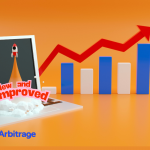This article introduces the Stack Slide method for Indian coaches, consultants, and freelancers who want to sell high-ticket offers without sounding desperate or adding fluff. It walks you through how to 1) structure your offer stack, 2) kill every major objection, and 3) make your ₹50,000+ price feel like a no-brainer. By the end, you’ll know how to build belief, position your assets like a pro, and sell with calm confidence—even to cold leads.
stack-slide-offer-framework
Table of Contents
I. Why most offers fail right before the close
Imagine you’re a sales coach on a Zoom call.
You’ve just spent 45 minutes walking through your framework. You’ve shown proof, answered every question, and shared your story.
People are nodding. You can feel the energy shift.
This is it, the moment they decide.
You flip to the final slide.
You say, “So you’ll get the course, plus a bonus module, some templates…”
And just like that, it dies.
No one unmutes. No one buys. Someone types “Thanks, I’ll think about it” in the chat and logs off.
What went wrong?
You didn’t close. You coasted.
When belief was wobbling, you gave them more information.
When tension was highest, you gave them a summary.
This is where most coaches, consultants, and freelancers lose sales.
They treat the final slide like a formality. A checklist.
But your last slide isn’t there to list. It’s there to convert.
A real offer doesn’t say, “Here’s more.”
It says, “Here’s why you can’t afford to walk away.”
That’s what a Stack Slide does.
It doesn’t add fluff. It removes doubt.
It doesn’t say, “Look at all this stuff.” It says, “Even if everything else fails, this one asset could 10x your business.”
If your final slide doesn’t make people sit up and think, How is this only ₹25,000?,
You don’t have an offer. You have a maybe.
And “maybes” don’t scale.
II. What is a Stack Slide?
Let’s go back to that Zoom call.
You’re the sales coach again. You’ve just seen the interest peak and then flatline.
Later that night, you’re replaying the call in your head. Rewatching the moment things slipped.
You didn’t stutter. You didn’t miss a question.
But the offer? It landed like a soggy biscuit.
You realize you tried to explain. You thought listing features would do the job.
Course + bonus + templates. The value was there.
But logic doesn’t sell when tension is high. Emotion does. Urgency does. Clarity does.
That’s what the Stack Slide is for.
It’s not a slide with a bulleted list. It’s a sequence that stacks belief.
Instead of dumping features, you build momentum.
Each line makes the next feel more valuable.
Each element removes one more excuse not to buy.
Here’s what it sounds like:
You’ll get the full 6-week program where I show you how to close strangers at ₹50K+ price points… plus the “What to Say” Script Pack with word-for-word lines for every type of sales objection… plus a 1:1 offer audit with me, so we make sure your pitch doesn’t just look good, it converts cold leads… plus access to my private Telegram group where students share real-time call breakdowns and wins…
You’re not listing. You’re stacking.
And with each stack, something changes.
The buyer stops thinking, should I buy this?
And starts thinking, how is this even real?
That’s the power of the Stack Slide.
Born in long-form webinars. Kills on sales pages. Devastating in DMs.
It turns your offer from “nice” to unskippable.
You can have the best product in the world. But if your offer doesn’t feel undeniable when you say it out loud, it won’t sell.
The Stack Slide fixes that.
It’s the final punch. The knockout.
And you only need to land it once.
III. The psychology of Stack Slides
Imagine you’re pitching your ₹50K coaching program on a sales call. The lead is nodding. They’re interested. And yet, when you drop the price, you hear that pause.
That “Hmm, let me think about it” silence.
That pause is doubt.
Not about your course. About the vehicle, the driver, and the road.
A. Break 3 core beliefs (in this exact order)
- Will this method work? (Vehicle)
You’re teaching a cold outreach system. They’ve seen gurus peddle the same thing.
You can’t win with logic. You win with proof.
So, your first stack item?
A 15-minute teardown of 3 real outreach messages that led to ₹ 1.2 L in booked calls in the past week.
Now they don’t have to believe your system works. They can see it with their own eyes.
- Will it work for me? (Internal)
They’ve tried cold outreach before. Got ghosted.
So, your second stack item?
A “First 10 DM Wins” worksheet that gives them prewritten intros for 5 niches even if they suck at writing.
Now they’re not imagining success. They’re sending messages with your lines today.
- What might stop me? (External)
They’re juggling kids, clients, and chaos. Will they have time? Will they stay on track?
Your final stack item?
A call accountability calendar where they track outreach daily and submit it in your group. You personally follow up if they ghost.
Now, even their procrastination has nowhere to hide.
Each stack item is a belief buster. One per enemy. In this order. Always.
B. Why buyers don’t want more stuff
Let’s be honest, nobody wakes up thinking, “I hope this funnel gives me 6 bonuses today.”
More stuff = more decisions = more doubt. But if every single line in your Stack Slide answers a fear…
If every item eliminates a reason to say no, then you’re not just stacking things — you’re stacking certainty.
What kills deals is ambiguity. What closes them is clarity. That’s why a Stack Slide works.
Not because it’s long. But because it’s sharp. Not because it says “bonus.” But because it says, “This is where you stop worrying and start picturing wins.”
IV. How to build a Stack Slide
You’re standing in front of your whiteboard, marker in hand, ready to turn your coaching offer into a stack slide that slaps harder than any bargain bin deal. The goal? Make it so good, it feels like you’re bending the rules of selling, like you’re sneaking away with something no one else can offer.
Step 1: Start with a whiteboard dump
Grab every tool, template, checklist, shortcut, and secret weapon you’ve got tucked away. Don’t judge. Write down everything that helps your clients save time, cut confusion, or lock in results.
Imagine your whiteboard covered in sticky notes: a DM script that booked ₹1.2L worth of calls, a checklist that cuts onboarding from 3 days to 3 hours, a template that makes cold emails hit like they’ve been personalized by a mind reader.
If it saves an hour, adds clarity, or guarantees a win, it belongs on this list. You’re not brainstorming fluff here; you’re inventorying gold.
Step 2: Cut the filler
Now, slash the noise. Ditch the “extra modules” no one finishes. Cut the “five more calls” that sound like homework. No one cares about endless lectures or vague bonuses.
What survives? Swipe files that get people writing killer messages without staring at a blank screen. Cheat sheets that shortcut decision paralysis. AI helpers that do the boring parts faster than a freelancer on a double espresso. SOPs that turn chaos into clockwork.
Rule: Add tools, not training. Your buyer isn’t begging for more videos; they want weapons they can pull out and use immediately.
Step 3: Price every piece based on ROI
Here’s where most coaches flub. They price based on how long something takes, not what it’s worth.
Use the 10x Value Rule: if your shortcut saves 1 hour every week, it’s worth at least ₹100. That DM script? It’s not just a template, it’s ₹10,000 of booked calls in a neat package. The accountability calendar? Priceless if it keeps your clients from ghosting you and their own goals.
Don’t sell the shortcut cheap just because it’s small. A 5-minute cheat sheet that stops a ₹50,000 deal from dying? That’s the crown jewel.
V. The 6 elements of a Stack Slide
Picture this: You’re sitting across from a lead on a Zoom call. They like your vibe. They see the price and hesitate. Then you hit the stack slide, and one by one, their doubts start to crumble. By the time you finish, you’ve got a “Yes” hanging in the air like a winning lottery ticket.
Here’s the anatomy of a ₹75,000 stack slide that crushes objections, builds belief, and sells without sounding like a desperate hustler.
Every item should destroy one major doubt
1. Opportunity switch masterclass
This isn’t your typical training module. It flips their thinking upside down. Instead of “Will this work?” it makes them say, “This is the only way.”
Imagine a live session where you shred their old beliefs about cold outreach being dead or high-ticket sales being too complicated.
This kills the vehicle objection. They stop doubting your system because you rewired their brain.
2. The asset pack
Now that their head is in the game, hand them the tools that do the heavy lifting.
Templates for emails that get replies. Dashboards that track progress without Excel nightmares. Swipe files so swipe-happy they never write cold again.
This wipes out external objections. No time, no skills, no chaos. They see these assets as armor against overwhelm.
3. Case study breakdowns
Show them people like them who got results. Not vague testimonials. Real screenshots. Numbers they can eyeball.
“Look at Ravi from Pune, booked ₹ 1.2 L in calls last week using this exact script.”
This takes the internal objection hostage. If Ravi did it, why can’t they? Proof anchors belief.
4. Feedback or community layer
No one wants to be left alone after buying. Async audits, Slack check-ins, and group support give them a safety net.
Picture someone in your group hitting a wall, posting their pitch, and getting instant feedback from you or peers.
This dual-kills external “I can’t keep up” and internal “I’m alone in this” doubts.
5. “Mini Coach” tool
Throw in an interactive calculator, an AI-powered message generator, or a decision flow that feels like having you whispering next steps in their ear.
This justifies the ₹75,000 price tag because it scales your coaching without burning you out.
Clients feel they’re getting leverage, a shortcut so sharp it slices through excuses.
6. Urgent, exclusive bonus
Last but not least, add a time-locked or VIP-only bonus, maybe a 1:1 strategy call for the first 10 buyers or a secret workshop that won’t be repeated.
This forces action. No one wants to lose out.
It turns hesitation into FOMO, snapping them out of “Let me think about it” into “I’m in.
VI. What NOT to include in your Stack Slide
Ever bought a course that felt like a backpack stuffed with bricks?
You open it up, and there’s “Module 0: Mindset Foundations.”
Then “Bonus: Lifetime Access to All Replays Since 2019.”
And somewhere in there, a 47-slide Google Doc called “Content Strategy Framework.”
You scroll, skim, sigh, and close the tab.
That’s what filler does.
It doesn’t just get ignored.
It makes the whole product feel heavier, slower, and more confusing.
Here’s what not to put in your stack slide if you want buyers to act fast and feel smart about it.
Filler = Friction. Cut these:
1. Bonus coaching calls (unless framed as a tactical advantage)
A “coaching call” sounds helpful on paper. But unless it’s hyper-specific, it feels like dragging another meeting into an already full calendar.
Saying 2 bonus coaching calls with me sounds vague, slow, and heavy. Saying One 20-minute teardown where we break your current funnel and rebuild the first 3 moves, live feels like a shortcut.
Suddenly, it’s not a call. It’s a fix.
2. Extra modules (nobody asked for more homework)
People don’t want 10 hours of video. They want one idea that solves the problem and one tool that gets them moving.
Unless the extra module solves a new problem or kills a lingering objection, it’s friction.
If your offer was a suitcase, this would be the part where airport security says, “You’ve overpacked. Dump what you don’t need.”
3. Generic PDFs (unless they make the invisible obvious)
A 28-page eBook called Instagram Content Guide isn’t valuable. It’s just another tab left unopened.
But give someone a 2-page Steal This Caption Flow: 4 Posts That Took a Product from 0 to ₹40K in 6 Days, and now it’s useful, visual, and impossible to ignore.
The difference? One is advice. The other is evidence.
Rule of Thumb:
If it doesn’t kill an objection or increase certainty, it’s dead weight.
If the buyer won’t feel smarter, faster, or safer after opening that item, delete it.
Don’t stack for show. Stack for speed.
The goal isn’t to impress them.
The goal is to make buying feel like a shortcut.
Not another course.
Not another folder.
Not another thing they’ll get to “someday.”
But the exact tools that solve the problem, they’re already Googling tonight.
VII. How freelancers can use Stack Slides to productize services
You don’t need a course. You need a ₹25,000 stack that feels like ₹2,00,000.
Freelancers think selling services is different from selling products.
It’s not.
A high-ticket client and a course buyer have the same brain.
They need speed, proof, clarity, and a reason to believe this is the one offer that finally solves the problem.
Most freelancers pitch like this:
I’ll help you fix your funnel. ₹25,000.
Client hears: vague deliverables, open-ended timeline, high risk.
Now look at this instead:
Example of freelancer Stack Slide: Copy Audit Service
- 3 Async Loom Reviews
You send your landing page.
I record a teardown, pointing out what’s confusing, what’s converting, and what’s costing you clicks.
You apply. You send it back. We repeat.
→ This is the Feedback Layer.
- Copy Brief Generator (Notion + AI Tool)
You answer 5 questions.
It spits out a customer avatar, offer positioning, and headline angle.
→ This is the Mini Coach.
- Swipe-Ready SOPs for High-Converting Copy
Exactly how to write a landing page that doesn’t scroll into the void.
Even if you’ve never written copy before.
Even if you’re repurposing ChatGPT output.
→ This is the Asset Pack.
Case Studies: Before/After Comparisons from Real Clients
Here’s what Rahul’s landing page looked like before the audit.
Here’s what it looked like after.
Here’s what changed in his funnel performance.
→ This is the Internal Proof.
Slack Check-in for 7 Days Post-Audit
If something breaks, you don’t have to book a call or pray to Reddit.
I’ll reply within 24 hours. No ghosting.
→ This is the External Assurance.
You’re still selling a service.
But now it feels like a product.
It’s tangible.
It’s time-boxed.
It’s high-leverage.
You’re not charging ₹25,000 for a few reviews.
You’re selling a stack that feels like ₹2,00,000 worth of clarity, speed, and reduced risk.
And that feeling?
That’s what gets the yes.
VIII. Your Stack Slide is an objection assassin
This isn’t a summary slide.
This is a weapon.
The stack slide isn’t where you explain your value.
It’s where you prove that even your worst-case scenario is worth the price.
Because let’s be honest, most buyers don’t believe your promises.
They nod through your pitch, but in their head, they’re building a case against you:
“Will this actually work for me?”
“Will I even finish this?”
“Will I regret this in 24 hours?”
Your stack slide exists to destroy every one of those thoughts.
You don’t explain the ₹25,000 price tag.
You make them feel like they’re stealing something that should cost ₹200,000.
Your goal?
Get them to say:
“Even if the training sucks… these assets alone are worth the money.”
“Even if I never show up live… the mini-coach saves me 10 hours this week.”
“Even if I don’t use everything… that one SOP pays for the whole thing.”
The stack kills the objections before they’re even voiced.
Because at the end of the day, people don’t buy coaching.
They buy certainty.
And your stack slide, if built right, is the most convincing form of it.







 Allow notifications
Allow notifications
